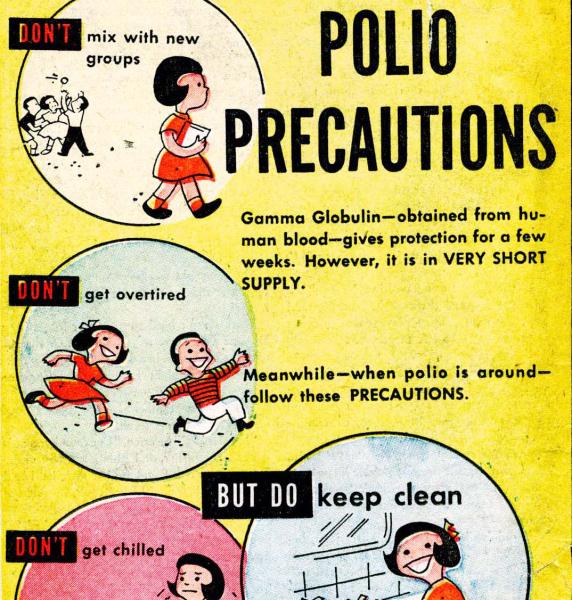It is hard to recognize the terror of infantile paralysis, polio, a highly infectious, R0 of 4 to 6, summer-time disease. It was asymptomatic for 95% of its hosts, which was good because the condition has no cure. It came and went, year and year, throughout the 20th century. In 1952, at its height, there were 58,000 cases, slightly over 5% died, and 44% were left with some degree of paralysis. In what might be considered the first patient-advocacy group, President Roosevelt, himself an adult victim of polio, founded the National Foundation for Infantile Paralysis (NFIP), today's March of Dimes. This group, not the government, provided funding for research into the prevention of polio.
In 1953, Dr. Jonas Salk appeared before the NFIP's Immunization Committee, a scientific advisory group, to report his injection of "killed" virus into 161 children – what we might term a Phase II trial today. Of course, the regulation of trials was still eight years in the future. With a possible treatment on the horizon, the Immunization Committee began to consider a more extensive field trial, which we call a Phase III study.
The planning began despite the serious objection of two committee members. The first, John Enders, the Nobel laureate, had devised the in-vitro technique for growing the poliovirus that Salk had used in developing his vaccine. The second, Albert Sabin, who went on to develop polio's attenuated vaccine. Their objection was two-fold. First, the safety of using a virulent polio despite its "inactivation," and in an echo of today, they questioned the relation of antibodies to permanent immunity. There was a trade-off to be made.
"The practice of medicine is based on calculated risk .... If [we wait until more] research is carried out, large numbers of human beings will develop poliomyelitis who might have been prevented from doing so."
The NFIP chose the calculated risk.
Because of polio's relatively low incidence, the experimental population needed to be large. The most expeditious approach was to target those most at-risk, children in grades 1 to 3, in the 272 counties with the highest incidence. We consider "good" science, especially from an epidemiologic perspective, to include a placebo control arm. The NFIP thought that such a group might "be too much of a calculated risk" and opted for an observational study, where one group was to be injected with the vaccine, the other group of children of similar age, simply observed.
The observational study design heightened the dissenting scientists' concern, who raised additional objections to a study sponsored by a lay organization. To quell a growing revolt, the NFIP sought outside mediation. They chose Dr. Francis Thomas, a physician, and virologist, the American who first isolated the flu virus and was responsible for the first flu vaccines. Jonas Salk had been among his doctoral students. Dr. Thomas had his own concerns and went about refashioning the study design.
He began by mobilizing support for a placebo control arm among state health officers, as they were the officials that would carry out the study. Dr. Thomas formed a new advisory panel, distinct from the Immunization Committee of the NFIP, who were excluded from further trial planning. His new panel including clinicians, statisticians, and public health officials, including those that Dr. Thomas had been cultivating, those supporting a placebo control. The clinicians "assumed" the use of observational controls, the statisticians insisted on placebo controls. With Dr. Thomas's thumb gently pushing down on the scale, the tie-breaking public health officials chose placebo control.
A placebo control satisfied and silenced the critical scientists, crediting a study being planned by a non-scientific organization and demonstrating the public health community's support.
The trial involved 623,972 children injected with a vaccine or placebo and more than 1 million children acting as observational controls. It found the vaccine to be 80-90% effective in preventing polio.
"If the Salk vaccine trials were to succeed, it was essential that they be a great national event, enlisting volunteers, doctors, and parents in one united effort that represented the culmination of 15 years of work and faith. Given the climate of scientific doubt that surrounded the killed-virus vaccine, it was essential that the field trials offer public, as well as scientific, validation of its effectiveness."
The Salk Trial was wildly successful, and with the public support of a massive immunization program in 4 years, the number of polio cases in the US had dropped to 161.
Source: 'A Calculated Risk': the Salk polio vaccine field trials of 1954 BMJ DOI: 10.1136/bmj.317.7167.1233




